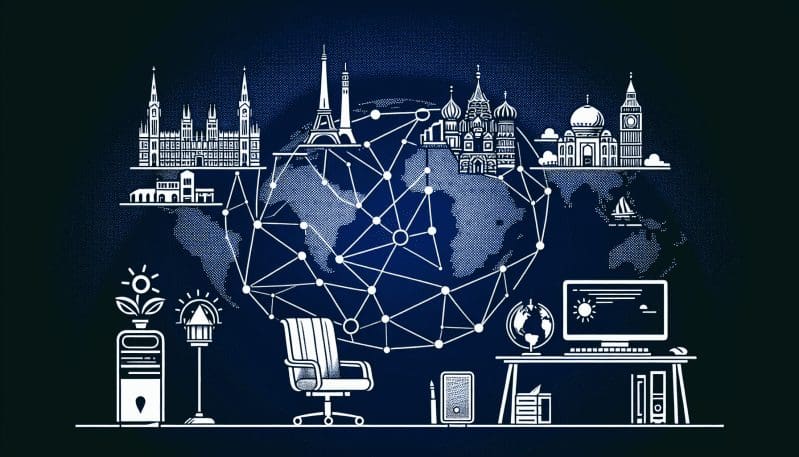The Remote Revolution: Redefining the Geography of Work
- Home
- The Remote Revolution: Redefining the Geography of Work

- Editors Desk
- January 11, 2024
- 0 Comments
In recent years, the concept of the workplace has undergone a seismic shift. Traditionally, the geography of work has been rigid, with employees commuting to centralized urban offices. However, the rise of remote work is challenging this long-standing paradigm, offering a new vision for the global workforce. The ‘Remote Revolution’ is not merely a response to temporary circumstances but an evolution of work culture that has significant implications for the global economy, urban planning, and the environment.
As remote work continues to gain traction, it’s imperative to discuss how this trend is transforming traditional employment landscapes. Cities, once the hubs of economic activity, may face a decline in commuter populations, altering local economies that have long depended on the influx of daily workers. The decrease in commuter traffic has potential environmental benefits, reducing greenhouse gas emissions and alleviating urban congestion. Yet this shift also poses questions about the future of public transportation systems, office real estate, and urban service industries.
Beyond the impact on cities, remote work is democratizing job opportunities. Talent is no longer confined by geographical boundaries. Employers can tap into a global talent pool, and employees can access opportunities that were previously beyond reach due to location constraints. This could lead to a more inclusive workforce, with increased opportunities for those in rural areas or with mobility limitations. However, it also creates competition at a scale that we haven’t seen before, making the job market even more global.
To sustain this revolution, there is a pressing need for robust infrastructure. Connectivity becomes a basic utility, as critical as electricity or water. Investment in high-speed internet and digital tools is essential to level the playing field, especially for communities that have traditionally been left behind in the digital divide. Governments, businesses, and community leaders must collaborate to ensure that the infrastructure supports an equitable transition to remote work.
The balance of power between employers and employees is also evolving. Remote work offers flexibility, autonomy, and the potential for a better work-life balance. These factors can shift the dynamics in favor of employees who seek a greater degree of control over their work environment and schedule. On the flip side, the ‘always-on’ culture can blur the boundaries between work and personal life, leading to burnout. Negotiating this balance is one of the fundamental challenges of the remote work model.
Lastly, the sustainability of remote work models hinges on their ability to adapt to diverse workforce needs. Hybrid models are emerging to afford flexibility while maintaining some degree of physical collaboration. Companies have to explore how to foster company culture, collaboration, and innovation in a dispersed workforce while recognizing that remote work may not suit every role or individual.
In conclusion, the Remote Revolution is not just altering the geography of work; it is reshaping our entire approach to employment. As we navigate the intricacies of this transition, No Worker Left Behind is committed to ensuring that every worker has the support and resources they need to thrive in this new era. The conversation on remote work is far from over; it’s just beginning to unfold.

Leave A Comment